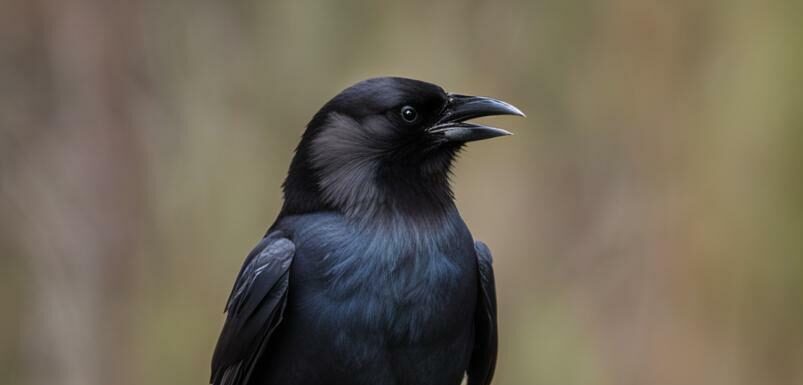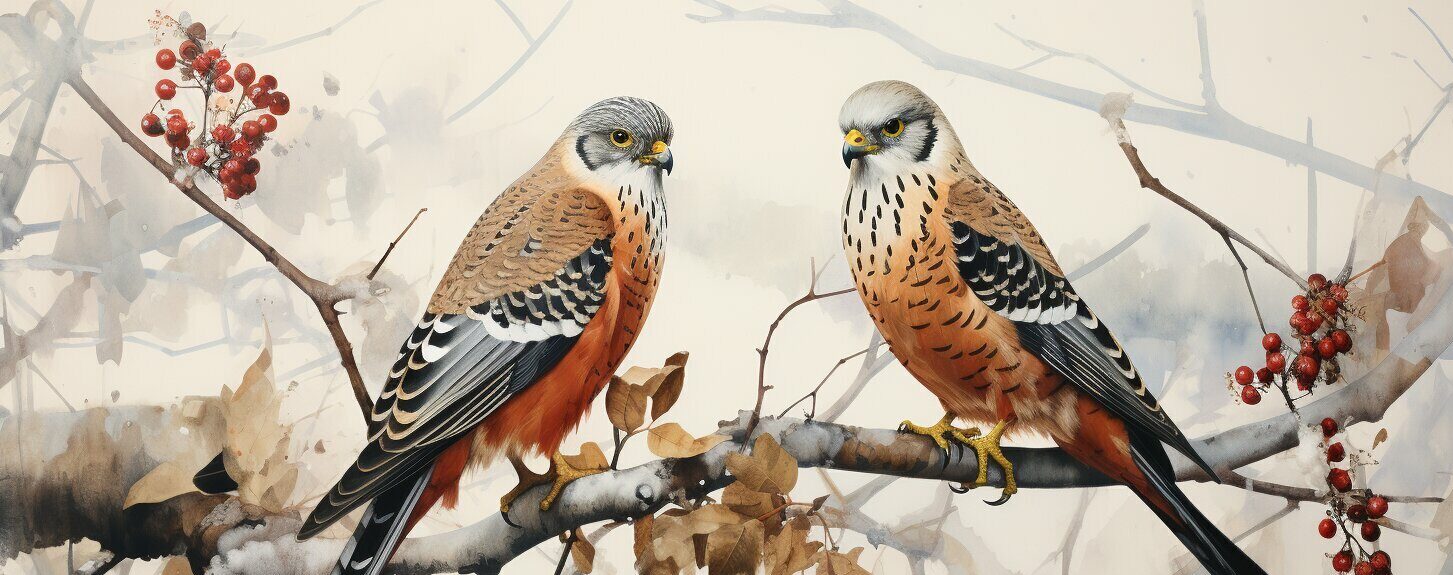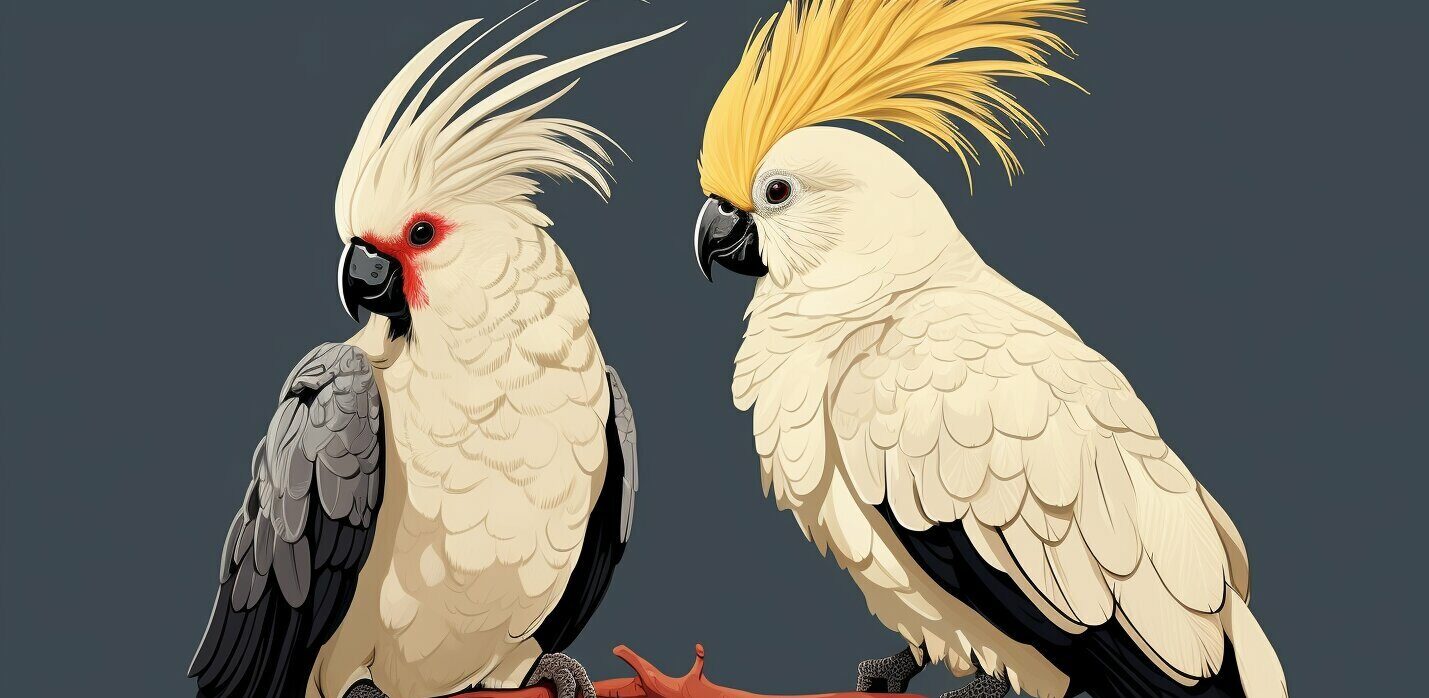Have you ever wondered how to differentiate between crows and rooks? In this guide, we’ll explore the main characteristics that set these two fascinating birds apart.
Key Takeaways:
- Crows and rooks are both part of the corvid family, known for their intelligence and adaptability.
- Crows, also known as carrion crows, are fully black with feathers covering their face and a black beak.
- Rooks are similar in size to crows but have bare white/greyish skin at the base of their grey bill.
- Crows are solitary birds, while rooks are highly sociable, frequently seen feeding and nesting in flocks.
- Physical differences between the two species can be subtle, with rooks having shaggier plumage and feathers that grow further down their legs.
Physical Characteristics of Crows and Rooks
While crows and rooks may both have black plumage, there are distinct physical features that set them apart. Crows, also known as carrion crows, are fully black birds with feathers covering their face and a black beak. They have a sleek and slender appearance, with a wingspan of around 85-100cm. In contrast, rooks have a similar size to crows, but they have bare white/greyish skin at the base of their grey bill. This bare skin is a key distinguishing feature of rooks. In addition, rooks have shaggier plumage and feathers that grow further down their legs, giving them the appearance of wearing baggy trousers.
Both crows and rooks belong to the corvid family, which includes ravens as well. Ravens are the largest members of the corvid family, with a wingspan of 120-150cm. They have shaggy throat feathers and a thick, black bill. Unlike crows and rooks, ravens often gather in flocks and nest on cliffs or large trees. Their impressive size and unique physical characteristics make them easy to identify in comparison to crows and rooks.
When observing these birds, it’s important to note that their black plumage can make them easily confused. However, by paying attention to their physical characteristics, such as the presence or absence of bare skin at the base of the bill and the overall size and proportion of their bodies, it is possible to differentiate between crows, rooks, and ravens.
Table: Comparison of Physical Characteristics
| Bird | Physical Characteristics |
|---|---|
| Crows | Fully black plumage, feathers covering face, black beak |
| Rooks | Fully black plumage, bare white/greyish skin at the base of the grey bill, shaggier plumage, feathers extending down legs |
| Ravens | Large size, shaggy throat feathers, thick black bill |
Behavior of Crows
Crows, also known as carrion crows, exhibit unique behaviors that differentiate them from rooks and other corvids. These intelligent birds are highly adaptable and can be found in a variety of environments, from urban areas to rural landscapes. Here are some key behaviors that set crows apart:
- Solitary nature: Unlike rooks, crows are primarily solitary birds. They are often seen alone or in small family groups, and they tend to establish territories which they fiercely defend.
- Curiosity and problem-solving skills: Crows are known for their inquisitive nature and exceptional problem-solving skills. They have been observed using tools to obtain food and even solving complex puzzles.
- Caching behavior: Crows have a remarkable ability to remember the locations of food caches. They will hide surplus food in various locations to ensure a steady food supply in the future.
- Vocalizations: Crows have a wide repertoire of calls and vocalizations, ranging from loud caws to softer coos. These vocalizations serve various purposes, including communication within their family groups and warning calls to alert others of potential threats.
It’s important to note that crows are highly adaptable and can exhibit different behaviors depending on their environment and available resources. These behaviors make crows fascinating birds to observe and study.
Quotes:
“Crows are incredibly intelligent birds with a knack for problem-solving. Their ability to use tools and solve complex puzzles sets them apart from many other species.” – Dr. Avian Researcher
“The caching behavior of crows is truly remarkable. They have an almost photographic memory when it comes to remembering the locations of hidden food stashes.” – Wildlife Biologist
Summary:
In summary, crows, also known as carrion crows, exhibit unique behaviors that distinguish them from rooks and other corvids. Their solitary nature, curiosity, problem-solving skills, caching behavior, and vocalizations are some of the key characteristics that set them apart. Understanding these behaviors can help bird enthusiasts and researchers gain a deeper appreciation for these intelligent and adaptable birds.
| Behavior | Distinguishing Feature |
|---|---|
| Solitary | Crows are primarily solitary birds, often seen alone or in small family groups. |
| Curiosity and problem-solving skills | Crows are highly curious and exhibit exceptional problem-solving skills, using tools and solving complex puzzles. |
| Caching behavior | Crows have a remarkable ability to remember the locations of food caches, hiding surplus food in various locations. |
| Vocalizations | Crows have a wide repertoire of calls and vocalizations, serving various communication and warning purposes. |
Behavior of Rooks
Unlike crows, rooks are highly sociable birds that frequently gather in flocks and nest together in noisy rookeries. They are known for their boisterous behavior and can often be seen interacting with one another, whether it’s during feeding or nesting. Rooks have a strong sense of community and often cooperate with other rooks in tasks such as finding food or protecting their nests.
One of the most fascinating aspects of rook behavior is their nesting habits. Rooks build large, communal nests in trees, known as rookeries, where many pairs of rooks establish their homes. These rookeries can consist of hundreds or even thousands of nests, creating a bustling community of birds. The presence of a rookery can be a key indicator when differentiating between crows and rooks.
In addition to their sociability, rooks are opportunistic feeders and will eat a wide variety of foods. They forage in fields, meadows, and gardens, often digging with their strong bills to extract insects or grubs from the ground. Rooks have also been observed using tools, such as sticks, to extract food from crevices or to manipulate objects.
Overall, the behavior of rooks showcases their highly social nature and cooperative tendencies. Their ability to gather in flocks and work together in rookeries sets them apart from their solitary counterparts, the crows. Understanding these behavioral characteristics can help bird enthusiasts differentiate between these two members of the corvid family.
Table: Comparison of Crow and Rook Behaviors
| Behavior | Crows | Rooks |
|---|---|---|
| Sociability | Generally solitary | Highly social, gather in flocks and nest in large rookeries |
| Feeding Habits | Opportunistic feeders, scavengers | Opportunistic feeders, forage in fields, meadows, and gardens |
| Cooperative Behavior | Often independent, minimal cooperation with other crows | Cooperate with other rooks for feeding and nesting |
Appearance and Plumage of Crows and Rooks
While crows and rooks may share a common black plumage, there are certain characteristics that allow for their visual identification. Crows, also known as carrion crows, are fully black in color, with feathers covering their face and a black beak. Their plumage appears sleek and glossy, reflecting sunlight with a subtle sheen. In contrast, rooks have shaggier plumage, giving a more disheveled appearance. Additionally, rooks have feathers that grow further down their legs, creating the impression of baggy trousers.
In terms of size, crows and rooks are quite similar, with both species measuring around 40-50 centimeters in length. However, rooks have a distinguishing feature that sets them apart—the bare white or greyish skin at the base of their grey bill. This unique characteristic is absent in crows, whose bills are completely black. Another key difference lies in their behavior and habitat preferences.
Table: Comparison of Physical Characteristics of Crows and Rooks
| Crows | Rooks | |
|---|---|---|
| Plumage Color | Black | Black with shaggier appearance |
| Beak Color | Black | Grey, with bare skin at the base |
| Feather Coverage | Covers face | N/A |
| Leg Feather Growth | N/A | Feathers grow further down, resembling baggy trousers |
Despite their similarities in appearance, crows and rooks demonstrate contrasting social behaviors. Crows are solitary birds known for their individualistic nature. They can often be spotted hopping around gardens, scavenging for food, and exploring their surroundings alone. On the other hand, rooks are highly sociable birds, frequently seen feeding in large flocks and nesting together in noisy groups called rookeries. The presence of a rookery is a clear indicator of the presence of rooks, differentiating them from the more solitary crows.
It’s important to note that the differences between crows and rooks can be subtle and can sometimes lead to confusion, especially for those unfamiliar with these corvid species. However, by observing their behavior, physical characteristics, and habitat preferences, one can gain a better understanding of these remarkable birds and appreciate the unique qualities that set them apart.
Comparison with Ravens
While crows and rooks share similarities, it’s important to note how they differ from ravens, which possess distinct physical characteristics and behaviors. Ravens are significantly larger than both crows and rooks, boasting an impressive wingspan of 120-150cm. They are easily recognizable by their shaggy throat feathers and a thick, black bill.
Ravens are known for their sociability, often gathering in flocks and displaying complex social behaviors. They can be found nesting on cliffs or large trees, creating large communal rookeries. In contrast, crows and rooks tend to be more solitary in nature, although they may visit gardens or other urban areas in search of food.
In terms of appearance, crows, rooks, and ravens all share the signature black plumage typical of the crow family. However, rooks have shaggier plumage compared to crows, and their feathers grow further down their legs, giving them a unique appearance resembling baggy trousers. These subtle differences in appearance can help differentiate rooks from both crows and ravens.
| Crows | Rooks | Ravens | |
|---|---|---|---|
| Physical Characteristics | Fully black, feathers covering face, black beak | Bare white/greyish skin at the base of grey bill | Shaggy throat feathers, thick black bill |
| Behavior | Solitary, often visit gardens | Sociable, frequently seen feeding in flocks and nesting together in rookeries | Gather in flocks, nest on cliffs or large trees |
| Appearance | Black plumage | Shaggier plumage, feathers further down legs giving impression of baggy trousers | Black plumage, shaggy throat feathers |
Conclusion
In conclusion, crows and rooks, despite their similar appearances, have distinct characteristics and behaviors that allow for their differentiation. Crows, with their fully black plumage and feathers covering their face, are solitary birds often found visiting gardens. On the other hand, rooks, similar in size to crows, can be distinguished by the bare white/greyish skin at the base of their grey bill. They are highly sociable and are frequently seen feeding in flocks and nesting together in noisy rookeries.
While both crows and rooks are part of the corvid family, along with ravens, they have subtle differences in their physical features. Rooks have shaggier plumage and feathers that grow further down their legs, giving them the appearance of wearing baggy trousers. These distinctive characteristics can aid in their identification.
It is important to note that these birds can be easily confused due to their black plumage. However, by observing their behavior, such as solitary habits for crows and sociability for rooks, and paying attention to their physical characteristics, such as the presence of bare skin on the bill for rooks, one can distinguish between the two species.
Overall, understanding the similarities and differences between crows and rooks is not only an interesting aspect of bird identification but also provides insights into the unique behaviors and appearances of these fascinating corvids.
FAQ
Q: What is the main difference between crows and rooks?
A: The main difference lies in their behavior and physical characteristics. Crows are solitary birds, while rooks are sociable and often seen in flocks.
Q: How can I distinguish crows and rooks by their physical characteristics?
A: Crows are fully black with feathers covering their face and a black beak. Rooks, on the other hand, have bare white/greyish skin at the base of their grey bill and shaggier plumage.
Q: Where do crows and rooks usually nest?
A: Crows often visit gardens and rooks nest together in noisy groups known as rookeries.
Q: Are crows and rooks the same size?
A: They are similar in size, but rooks have feathers that grow further down their legs, giving the impression of baggy trousers.
Q: Can rooks help differentiate themselves from crows?
A: Yes, the presence of a rookery, where rooks nest in groups, can help differentiate them from solitary crows.
Q: How do ravens differ from crows and rooks?
A: Ravens are larger in size with a wingspan of 120-150cm. They also have shaggy throat feathers and a thick, black bill. Ravens often gather in flocks and nest on cliffs or large trees.
 Skip to main content
Skip to main content


